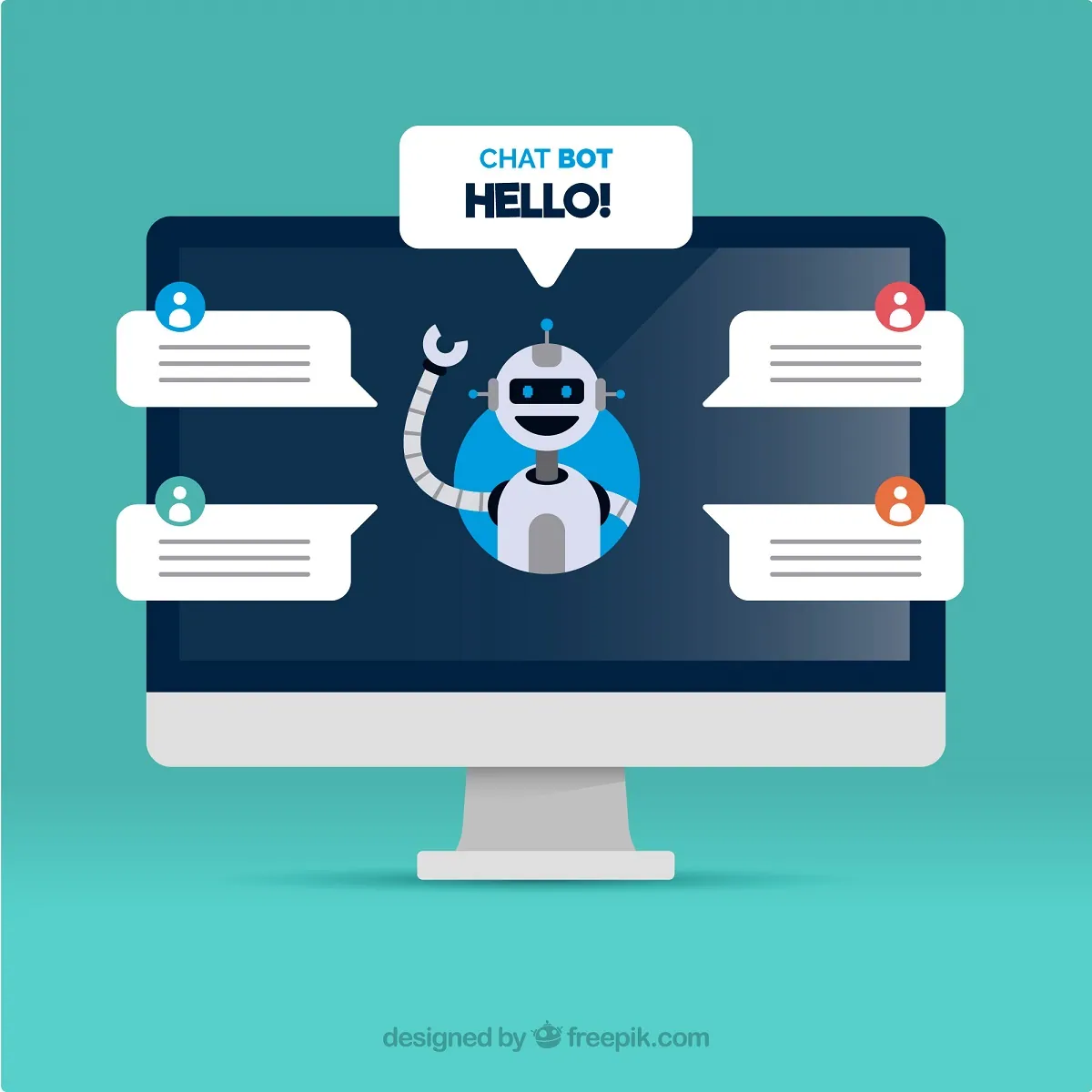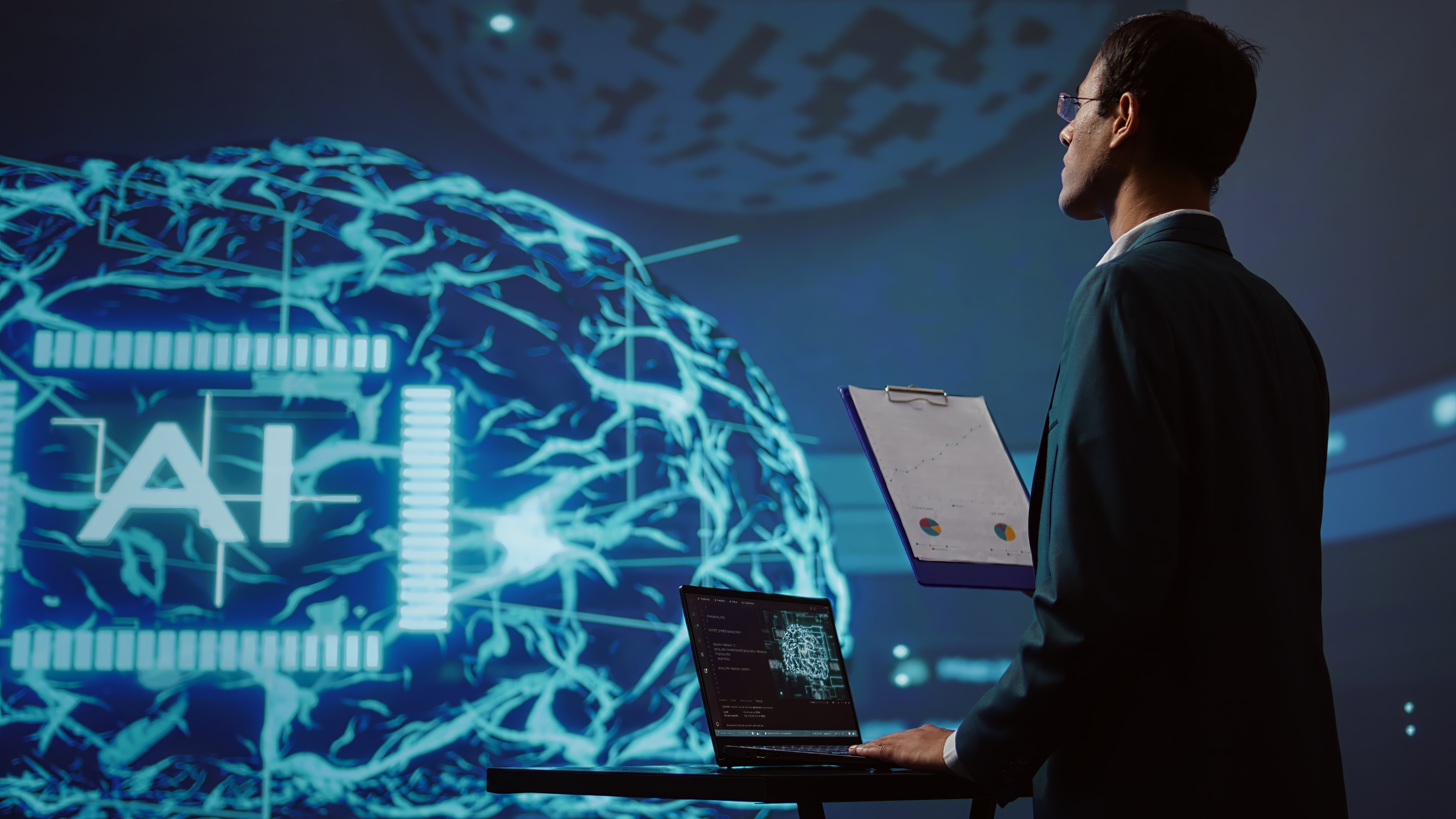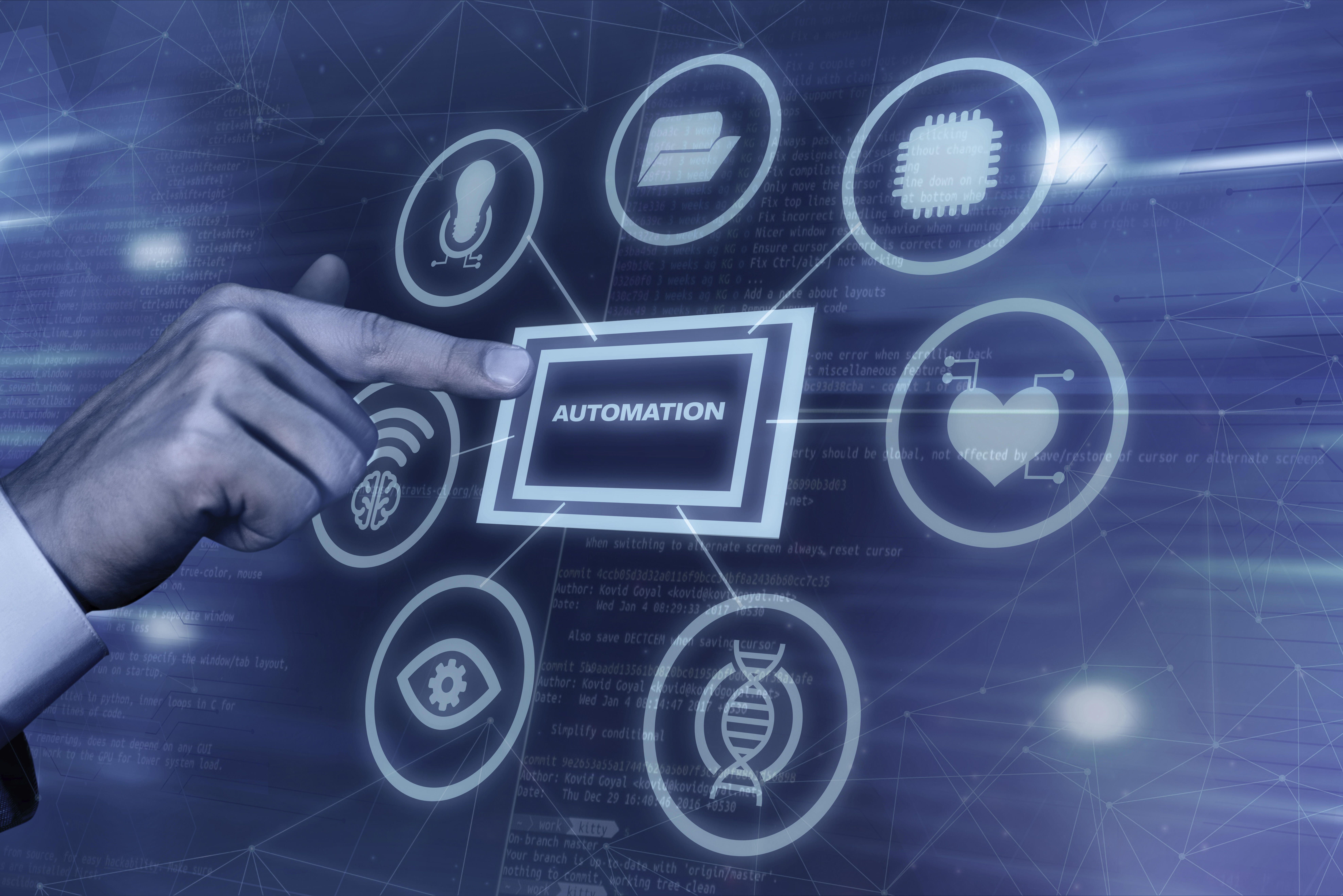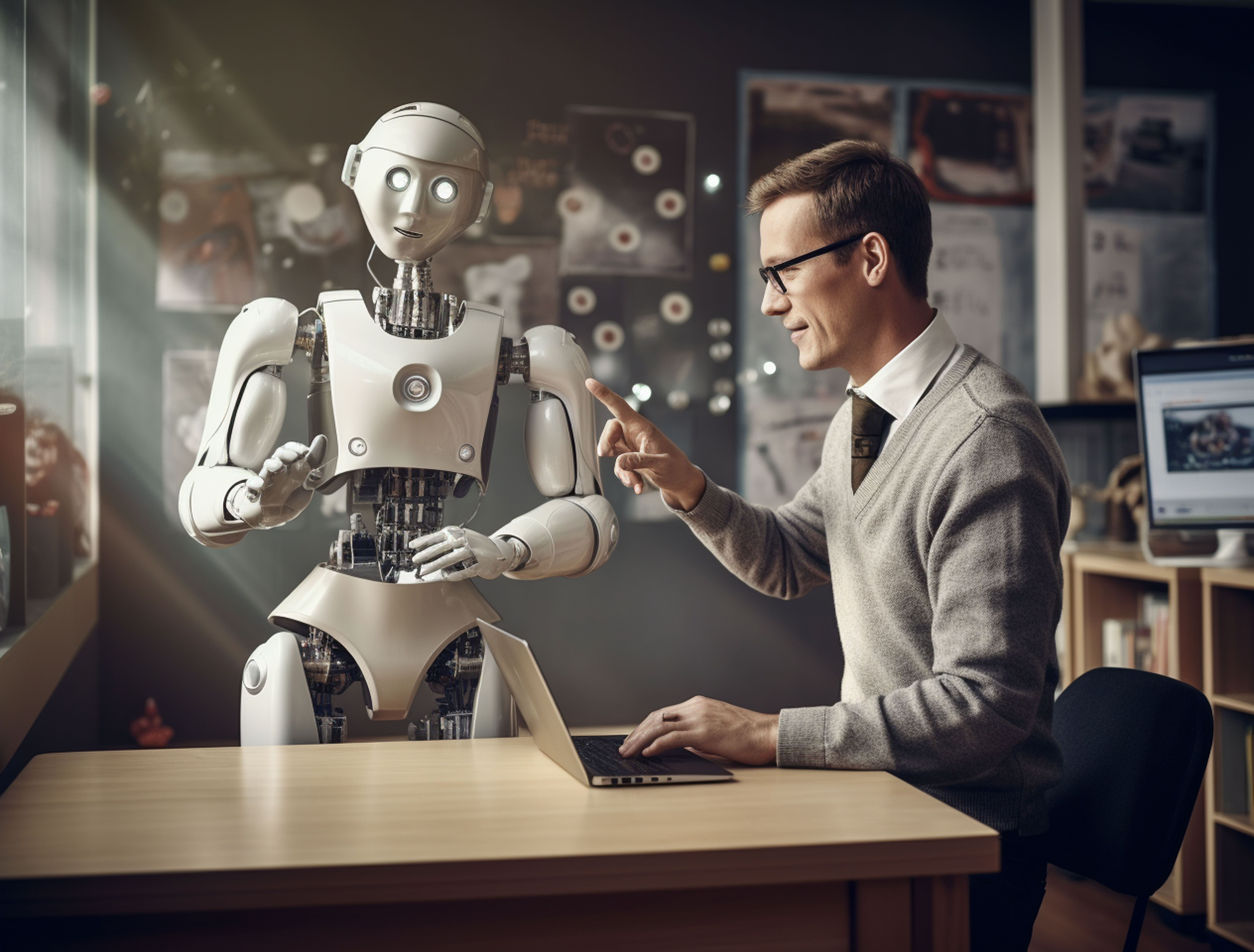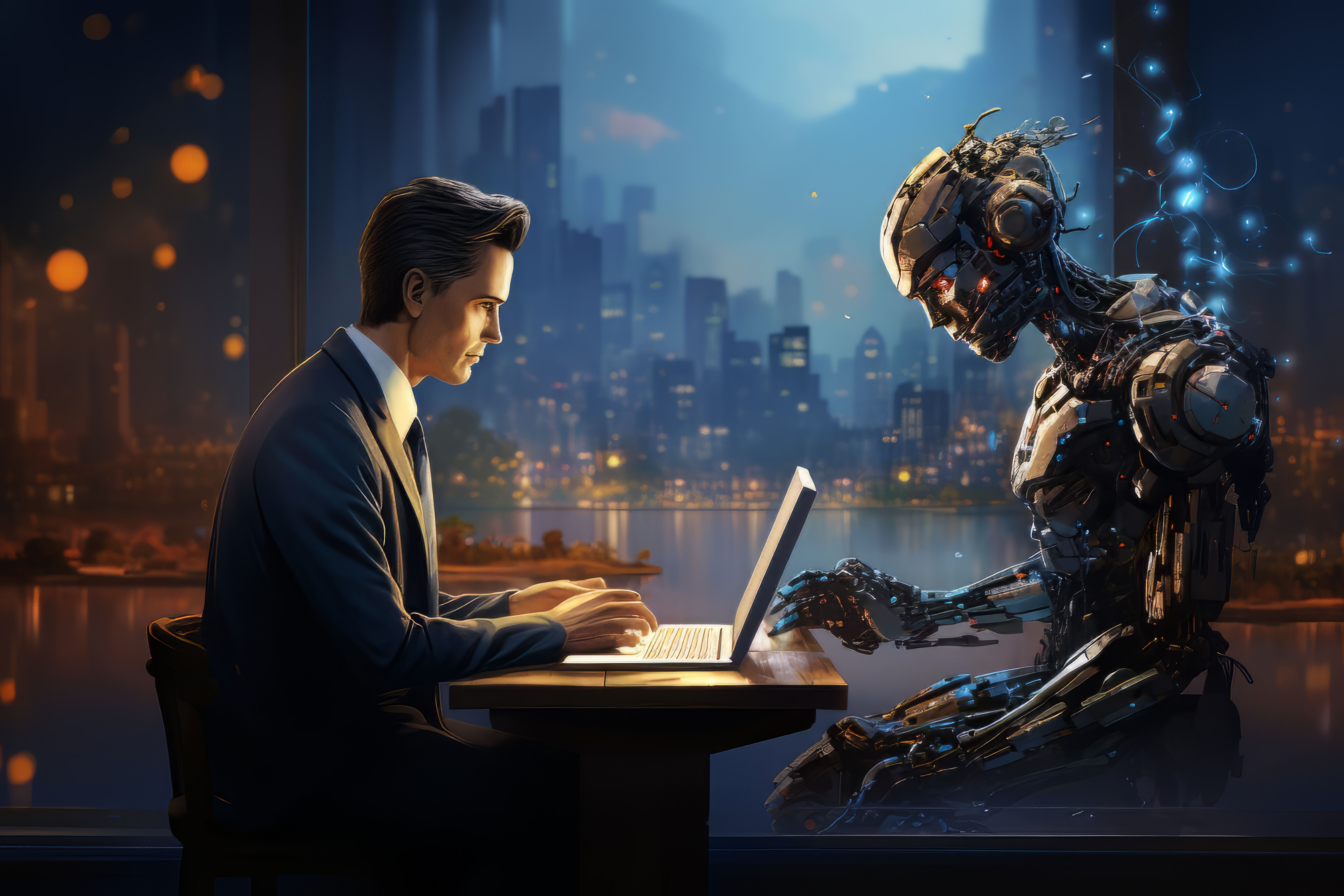How Does ChatGPT Work? Understanding the Technology Behind the AI Chatbot
What is ChatGPT?
ChatGPT is an advanced AI-powered chatbot created by OpenAI, a leading research organization in the field of artificial intelligence. At its core, ChatGPT is built on a technology called GPT, which stands for Generative Pre-trained Transformer. This language model has been trained on a vast amount of text from books, websites, and other written materials to understand the structure and patterns of human language. As a result, it can process input and generate responses that feel natural and conversational, making it a powerful tool for human-computer interaction.
In simpler terms, ChatGPT is like a virtual assistant that can hold conversations with users, understand their questions, and provide helpful answers. It’s capable of completing a wide range of tasks everything from explaining difficult topics in plain language to helping with creative writing, summarising information, translating text, and even solving problems in areas like maths or coding.
A Brief History of ChatGPT
ChatGPT was created by OpenAI, an artificial intelligence research company founded in 2015. The first version of GPT was released in 2018, but ChatGPT gained massive popularity with the release of GPT-3 in 2020 and GPT-4 in 2023. These models were trained on massive amounts of text data to help them understand language, context, and meaning. Over time, ChatGPT has become more powerful and widely used in both personal and professional settings.
Common Uses of ChatGPT in Daily Life
ChatGPT is used for many everyday tasks. Here are some popular ways people use it:
- Writing help: Drafting emails, blog posts, essays, and social media captions
- Homework and learning support: Explaining difficult topics, summarising texts, or generating study questions
- Coding assistance: Debugging code, writing scripts, or learning new programming languages
- Customer service: Answering FAQs and supporting automated chat systems
- Creative tasks: Writing stories, poems, or coming up with ideas for content
It’s like having a helpful assistant available 24/7, always ready to respond in natural, conversational language.
How Does ChatGPT Work?
ChatGPT is a computer program designed to understand and respond to text just like a human would. You type something in, and it replies in a way that feels like you’re chatting with a real person. It works by analysing your words, figuring out what you’re asking or saying, and then generating a response that fits the conversation. Think of it like a really smart virtual assistant that can read, write, and chat—all in natural language.
Responding Like a Human
What makes ChatGPT feel human-like is how it builds its replies. It doesn’t just give you random answers. Instead, it looks at the entire conversation, understands the context, and then picks words that sound natural and helpful. It has “learned” this by reading massive amounts of text from books, websites, and conversations. So, when you ask it a question or start a chat, it draws on everything it’s seen during training to respond in a way that makes sense.
Real-Life Examples of How People Use ChatGPT
People use ChatGPT in all kinds of ways every day. Students ask it to explain tricky subjects like maths or science. Writers use it to come up with ideas or edit their work. Job seekers get help writing CVs and cover letters. Some people even use it to practise languages or plan meals. It’s also popular for answering everyday questions, helping with research, or just having a fun, casual conversation.
So, how does ChatGPT work? In short, it’s trained to understand language like a human and respond in a smart, helpful way making it a useful tool for all kinds of daily tasks.
What is the Technology behind ChatGPT?
ChatGPT might seem like magic, but it’s powered by advanced technology working behind the scenes. Here’s a simple look at the steps that make this AI chatbot work so well.
Training on Large Datasets
The first step in building ChatGPT is training it on large amounts of text. This includes books, websites, articles, and more all kinds of public content available on the internet. The goal is to teach the AI how people use language: how they ask questions, give answers, tell stories, and hold conversations. By learning from so much text, ChatGPT starts to recognise patterns in how words and sentences are used.
Using a Language Model (GPT)
At the heart of ChatGPT is a language model called GPT, which stands for Generative Pre-trained Transformer. This model doesn’t understand language like a human does, but it’s excellent at guessing what word or sentence should come next in a conversation. It was pre-trained on the large dataset and then fine-tuned to perform specific tasks, like answering questions or writing clearly.
Making Predictions
When you type something into ChatGPT, the system looks at your input and predicts the most likely next words based on everything it has learned. It doesn’t search the internet it creates a response by putting together words that fit the context of your message. This prediction ability makes the conversation feel smooth and human-like.
Fine-Tuning and Safety
After the initial training, the model goes through a fine-tuning process. This step helps improve its accuracy, remove harmful content, and make sure it gives safe, useful answers. OpenAI also uses feedback from users to continually improve the system over time.
What Makes ChatGPT So Smart?
ChatGPT feels smart because it’s designed to understand and respond like a human. But what’s actually happening under the hood? Let’s break it down into simple parts.
Pattern Recognition and Learning from Context
One of ChatGPT’s biggest strengths is its ability to recognise patterns in language. It has been trained on a massive amount of text, so it has seen how words, phrases, and ideas are typically used. For example, it knows that “How are you?” is often followed by something like “I’m good, thanks.” When you ask it a question or write a sentence, it looks at the structure and meaning to guess what kind of response would fit best. This ability to pick up on patterns makes the conversation feel natural and smart.
Role of Probability and Next-Word Prediction
Instead of thinking like a human, ChatGPT works by calculating probabilities. For every word it generates, it’s choosing the one most likely to come next based on everything you’ve typed so far. It doesn’t choose words randomly—there’s a system behind every reply. This next-word prediction is what powers its ability to write clearly, answer questions, and even tell jokes.
How It “Remembers” the Conversation
ChatGPT doesn’t have memory like a human, but it can keep track of what’s been said during a conversation. This is called short-term context. It allows the AI to refer back to your previous messages so it can stay on topic and respond in a way that makes sense. That’s why you can ask follow-up questions, and it will still know what you’re talking about.
So, what makes ChatGPT so smart? It’s a mix of training, pattern recognition, prediction, and smart conversation flow all designed to feel natural and helpful.
How is ChatGPT Different from Search Engines?
ChatGPT and search engines like Google might seem similar at first, they both answer questions. But how they work and what they’re best at are quite different. Let’s explore the key differences.
Answering Questions vs. Finding Websites
Search engines are designed to find and rank web pages. When you type a question into Google, it shows you links to websites that might have the answer. You still need to click, read, and search through those pages to get the full information. ChatGPT, on the other hand, gives you a direct answer in the chat. You don’t have to open other websites it provides a reply based on what it has learned from lots of information during its training.
Why ChatGPT Feels Like a Conversation
Unlike search engines, ChatGPT responds in a conversational way. It remembers what you’ve already asked (within the same session) and can continue the conversation naturally. You can ask follow-up questions or request more detail, and it adjusts its answers accordingly. This back-and-forth makes it feel more like you’re chatting with a person rather than just searching for facts.
Strengths and Weaknesses Compared to Google
ChatGPT is great for summarising information, explaining complex topics, writing content, or helping with creative tasks. However, it doesn’t browse the internet in real time, so it may not have the latest news or updates. Search engines are better for finding up-to-date information, product comparisons, or official sources.
What are the Real-World Applications of ChatGPT?
ChatGPT is more than just a fun chatbot it’s being used in many real-world situations to solve problems, save time, and boost productivity. From classrooms to businesses, here’s how people and organisations are putting it to work.
In Education, Business, Healthcare, and Customer Support
In education, teachers and students use ChatGPT to explain tricky topics, generate quiz questions, and help with writing assignments. In the business world, teams rely on it to draft emails, brainstorm ideas, and automate routine tasks. Healthcare professionals use AI tools like ChatGPT to simplify medical information for patients or assist with note-taking. In customer support, it powers chatbots that handle FAQs, freeing up human agents for more complex issues.
Helping with Writing, Coding, Learning, and Productivity
One of the most common uses of ChatGPT is for writing whether it’s composing emails, creating content, or proofreading documents. It also helps programmers by explaining code, finding bugs, and even writing scripts. Learners use it as a study buddy to review subjects, summarise topics, or quiz themselves. Because it can quickly produce clear and accurate responses, it’s a powerful tool for boosting productivity in both personal and professional settings.
Examples of ChatGPT Integrations with Apps and Platforms
ChatGPT is now being integrated into popular platforms and apps. For example, it's available inside Microsoft Word and Excel through Copilot, where it helps users write, summarise, or generate data-based content. Some websites and learning platforms use ChatGPT to provide instant help or feedback to users. Businesses also connect it to internal tools for faster communication and automation.
The real-world applications of ChatGPT show just how flexible and powerful it can be—making everyday tasks smarter and easier across industries.
What are the Limitations of ChatGPT?
While ChatGPT is a powerful tool, it’s important to understand what it can and cannot do. Like any technology, it has its limitations, and being aware of them helps users make better decisions when using AI in everyday life.
It Doesn’t “Think” or “Understand” Like Humans
Even though ChatGPT gives intelligent-sounding responses, it doesn’t truly understand meaning the way people do. It doesn’t have thoughts, emotions, or consciousness. Instead, it generates replies based on patterns it has learned from the text it was trained on. So, while it can explain ideas or answer questions clearly, it doesn’t know anything in the way a human does.
Possibility of Mistakes or Biased Responses
Because ChatGPT relies on the data it was trained with, it can sometimes provide incorrect or misleading information. It may sound confident, even when it’s wrong. There’s also a risk of bias in responses, especially if the training data included biased or unbalanced content. That’s why it’s always a good idea to double-check important facts or advice with reliable sources.
Can't Access Live Information
ChatGPT doesn’t browse the internet in real time. It can only respond based on what it learned during training, which means it may not know about recent events or updates. Unless it's connected to a live data source or regularly updated, it won’t provide the most current information—especially for things like news, prices, or evolving topics.
Understanding the limitations of ChatGPT helps users set realistic expectations. It’s a helpful assistant for many tasks, but it should be used with care, especially when accuracy and up-to-date information are critical.
How Can you Learn More About or Use ChatGPT?
Getting started with ChatGPT is easy and learning how to use it effectively can open doors to new skills and career opportunities. Whether you're a student, professional, or just curious, there are plenty of ways to explore and learn more.
Easy Ways to Try It
The simplest way to try ChatGPT is through the official ChatGPT website or by downloading the ChatGPT mobile app. It works like a normal chat you just type a message and get a response. There’s no need for coding skills or tech knowledge, making it beginner-friendly and accessible to everyone. You can ask questions, get help with writing, brainstorm ideas, or just explore what the tool can do.
Careers and Skills Related to Using ChatGPT
ChatGPT is becoming a useful tool in many jobs. Writers use it to create content, marketers use it to generate ideas, and customer support teams use it to answer common questions. Developers also use it to write and review code. Learning how to use ChatGPT well especially crafting good prompts—is now seen as a valuable digital skill. It can also introduce you to related fields like artificial intelligence, machine learning, and automation.
Courses Available at LAI
Learn Artificial Intelligence (LAI) offers online courses designed for beginners who want to understand AI tools like ChatGPT. These courses cover practical uses, tips for better results, and even explain how ChatGPT works behind the scenes. It’s a great way to deepen your knowledge and use AI more confidently in everyday life or at work.
With the right guidance, you can turn curiosity into real-world skills.
Conclusion
Understanding ChatGPT is essential in today’s tech-driven world. We’ve covered its uses, how it works, real-life applications, and key limitations. From helping with writing and learning to boosting productivity at work, ChatGPT is a versatile tool. As AI becomes more common, knowing how to use it responsibly is an important skill. Many people often search what is chat GTP, but learning the correct term ChatGPT and understanding how does ChatGPT work can make all the difference. Being AI-literate means not just using these tools, but also thinking critically about their role and impact in our everyday lives.

